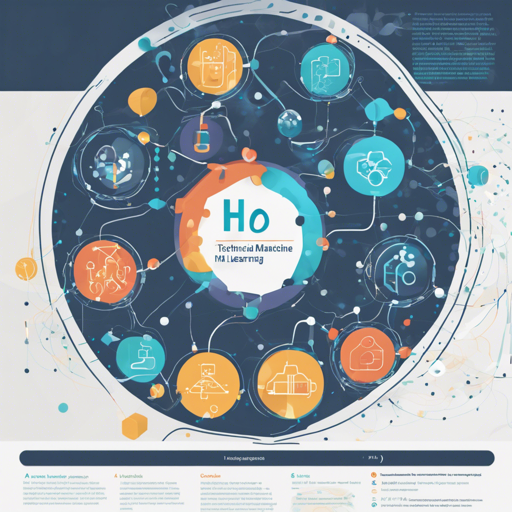Welcome to the world of H2O, an extraordinary in-memory platform that empowers developers and data scientists alike to perform distributed and scalable machine learning with ease. Whether you’re a newbie or a seasoned pro, this guide will walk you through the essential steps to get started with H2O and troubleshoot common issues.
What is H2O?
H2O is a versatile and flexible machine learning platform that supports popular programming languages such as R, Python, Scala, and Java, alongside integrations with big data tools like Hadoop and Spark. It offers implementations of numerous algorithms, including Generalized Linear Models (GLM), Gradient Boosting Machines, and Deep Neural Networks that cater to a wide range of data science applications.
Table of Contents
- Downloading H2O-3
- Open Source Resources
- Using H2O-3 Code Artifacts (libraries)
- Building H2O-3
- Launching H2O after Building
- Building H2O on Hadoop
- Sparkling Water
- Documentation
- Citing H2O
1. Downloading H2O-3
For most users, the easiest way to get started is by downloading a pre-built version. Here’s how you can install H2O:
- Python:
bashpip install h2o - R:
rrinstall.packages(h2o)
For a variety of versions, including stable, nightly, and Hadoop releases, visit the download page.
2. Open Source Resources
Most interactions for support and improvements revolve around the following resources:
- GitHub: H2O-3 GitHub Repository
- Stack Overflow: To ask or answer questions, visit H2O on StackOverflow.
- Gitter: For live discussions, explore the H2O Chatroom.
3. Using H2O-3 Artifacts
When publishing a nightly build, R, Python, Java, and Scala artifacts are made available. Here’s a quick look at how you can manage dependencies with Gradle:
def h2oBranch = master
def h2oBuildNumber = nnnn
def h2oProjectVersion = x.y.z.$h2oBuildNumber
repositories {
h2o-3 dependencies {
maven {
url "https://s3.amazonaws.com/h2o-release/h2o-3/$h2oBranch/$h2oBuildNumber/mavenrepo"
}
dependencies {
compile "ai.h2o:h2o-core:$h2oProjectVersion"
compile "ai.h2o:h2o-algos:$h2oProjectVersion"
compile "ai.h2o:h2o-web:$h2oProjectVersion"
compile "ai.h2o:h2o-app:$h2oProjectVersion"
}
}
}This build file structure showcases how one can create a reliable environment for H2O dependencies, akin to how an architect prepares a blueprint before constructing a building. By providing all the essential material types and their connections, the architect ensures a solid foundation for the project to thrive.
4. Building H2O-3
To build H2O from source, you’ll need:
- JDK 1.8+
- Node.js
- Gradle
- Python
- R
Once you have the prerequisites, follow these essential commands:
- Clone the repository:
git clone https://github.com/h2oai/h2o-3.git - Build H2O:
cd h2o-3 && ./gradlew build -x test
5. Launching H2O after Building
To run the H2O cluster locally, execute:
java -jar build/h2o.jar
For further configurations on JVM options, refer to the H2O User Guide.
6. Building H2O on Hadoop
For Hadoop users, pre-built H2O-on-Hadoop zip files can be found on the download page. You can also build H2O yourself with Hadoop support by following these commands:
export BUILD_HADOOP=1
./gradlew build -x test
./gradlew distBy enabling the BUILD_HADOOP environment variable, you’re essentially telling the system that you’re preparing a robust kitchen where the ingredients (in this case, software) will be handled seamlessly. This is paramount for ensuring a smooth cooking process, much like how building H2O works with Hadoop.
7. Sparkling Water
Sparkling Water is a bridge that connects Spark and the H2O Machine Learning platform, allowing users to leverage the best features from both technologies. You can find more about Sparkling Water on the download page.
8. Documentation
The main H2O documentation is your go-to resource for detailed guidance and best practices. It can be accessed through the H2O User Guide.
9. Citing H2O
If you use H2O in your work, please consider citing its resources properly to give credit to the developers.
Troubleshooting Steps
Common issues can arise during installation or use. If you encounter problems, consider the following steps:
- Ensure all dependencies are installed correctly as specified in the requirements.
- Check your environment variables for proper configurations.
- Review the error logs to identify the issue, running commands like
--stacktracefor more detail. - If you don’t find your answers, consult the community. You can ask questions on GitHub Issues, on Stack Overflow, or reach out via Gitter.
For more insights, updates, or to collaborate on AI development projects, stay connected with fxis.ai.
Conclusion
At fxis.ai, we believe that such advancements are crucial for the future of AI, as they enable more comprehensive and effective solutions. Our team is continually exploring new methodologies to push the envelope in artificial intelligence, ensuring that our clients benefit from the latest technological innovations.

